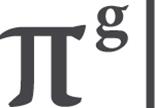Out-of-court bankruptcy of individuals: the law has been adopted
Pepeliaev Group advises that on 1 September 2020 amendments are coming into effect to the Bankruptcy Law which provide for a new procedure of out-of-court bankruptcy of individuals.
MFTs will send a copy of the notification that information was entered into the Bankruptcy Register regarding the procedure of out-of-court bankruptcy of an individual to the credit institutions with which the debtor has a bank/deposit account contract.
The creditors information about which the individual submitted to MFTs are entitled to search for assets or property rights of an individual that are to be registered or recorded otherwise by sending requests to competent authorities. The creditors may also challenge transactions of the individual.
When the debtor’s property is identified (including as a result of transactions challenged or a request received from a state authority) this serves as a ground to have out-of-court procedure terminated and the general bankruptcy procedure initiated at the petition of a creditor. Within the scope of the general procedure, the property should be sold.
Upon its completion:
Further, general consequences will be applied of the completed bankruptcy as stipulated by article 213.30 of the Bankruptcy Law and restricting the debtor’s ability to, among other things, carry out entrepreneurial activity and participate in management bodies of a legal entity.
The debt relief does not apply to the obligations the debtor concealed and the creditor’s claims that are expressly mentioned in the law (clauses 4(2), 4(4), 5(1) and 6 of article 213.28 of the Bankruptcy Law).
What is the difference between the out-of-court and general bankruptcy procedure
The new procedure of out-of-court bankruptcy is available only for individuals who have minor debts. Therefore, the procedure is conducted in a simplified manner without involving a court or a court-appointed administrator, and the right to, among other things, conduct asset search and challenge transactions is granted to creditors.The conditions and procedure for initiating the out-of-court bankruptcy of an individual
The law stipulates the following conditions for initiating an out-of-court bankruptcy of an individual:- the total amount of claims against the individual under the principal debt ranges from RUB 50,000 to RUB 500,000;
- as at the date a petition was filed with respect to the debtor, the enforcement proceedings were terminated owing to the fact that the debtor did not have any property or no enforcement proceedings were initiated.
The consequences of an out-of-court bankruptcy procedure being initiated
Starting from the date when information is entered in the Bankruptcy Register regarding the initiation of the procedure, the following consequences will occur:- the obligations which emerged earlier are deemed to be due;
- financial sanctions and interest on obligations cease to be accrued;
- no rules will be applied regarding the situation when a recoveror forwards writs of execution to banks and other credit institutions, while all writs of execution should be forwarded to the Bailiffs Service only;
- enforcement proceedings over property sanctions are terminated, except for claims that are inextricably linked with the personality, as well as claims of creditors that are not indicated in the bankruptcy petition under the out-of-court procedure;
- seizures on debtor's property will be lifted under the enforcement proceedings that were suspended;
- state authorities responsible for registering property will start providing information they possess at the requests of creditors;
- an individual cannot obtain loans or credits, or grant surety and enter into other security transactions.
MFTs will send a copy of the notification that information was entered into the Bankruptcy Register regarding the procedure of out-of-court bankruptcy of an individual to the credit institutions with which the debtor has a bank/deposit account contract.
 | At present, the law does not provide for debtor’s personal data to be sent to its creditors and, therefore, it is important to track in a timely fashion any information published in the Bankruptcy Register regarding counterparties who are individuals. |
Guarantees for creditors
The creditor the obligations to whom the debtor has not disclosed is entitled to initiate bankruptcy of the relevant individual under general rules before the date when the out-of-court procedure is complete or terminated.The creditors information about which the individual submitted to MFTs are entitled to search for assets or property rights of an individual that are to be registered or recorded otherwise by sending requests to competent authorities. The creditors may also challenge transactions of the individual.
When the debtor’s property is identified (including as a result of transactions challenged or a request received from a state authority) this serves as a ground to have out-of-court procedure terminated and the general bankruptcy procedure initiated at the petition of a creditor. Within the scope of the general procedure, the property should be sold.
 | At present, the law stipulates that creditors should send their requests via the inter-departmental electronic interaction system. However, not all organisations have access to the system. The Russian Government needs to specify the procedure for providing information. |
Completion of out-of-court bankruptcy procedure and writing-off of debts
The out-of-court bankruptcy procedure lasts 6 months once information reaches the Bankruptcy Register.Upon its completion:
- the individual will be released from obligations set out in the bankruptcy petition under the out-of-court procedure and included in the Bankruptcy Register;
- the debts to those creditors will be recognised as bad debts.
Further, general consequences will be applied of the completed bankruptcy as stipulated by article 213.30 of the Bankruptcy Law and restricting the debtor’s ability to, among other things, carry out entrepreneurial activity and participate in management bodies of a legal entity.
The debt relief does not apply to the obligations the debtor concealed and the creditor’s claims that are expressly mentioned in the law (clauses 4(2), 4(4), 5(1) and 6 of article 213.28 of the Bankruptcy Law).

